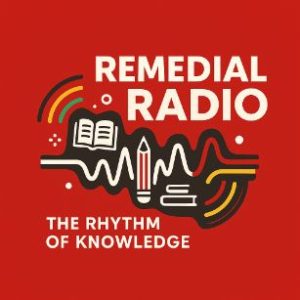Master the basics of Kiswahili adjectives in this Senior One beginner’s guide. Learn how to use adjectives of number (idadi), quality (sifa), and questions (viulizi) through examples, explanations, and practice activities.
Introduction:
What Are “Vivumishi”?
In Kiswahili grammar, an adjective is called “kivumishi” (plural: vivumishi). These are words used to describe nouns, just like in English. For example:
- mtoto mzuri – a good child
- vitabu vitatu – three books
- gani? – which one?
In this blog, we’ll explain three types of adjectives:
- Vivumishi vya idadi – adjectives of number
- Vivumishi vya sifa – adjectives of quality
- Vivumishi vya viulizi – interrogative adjectives
We’ll use mostly English to help you understand, and include examples, tables, and mini activities in Kiswahili with English support.
1. Vivumishi vya Idadi – Adjectives of Number
These are words that tell us how many or in what order things are.
🧮 Examples:
| Kiswahili | English Translation |
| moja | one |
| mbili | two |
| tatu | three |
| nne | four |
| tano | five |
| saba | seven |
| kumi | ten |
| wa kwanza | the first |
| wa pili | the second |
| wa tatu | the third |
📝 Example Sentences:
- Nina vitabu vitano. → I have five books.
- Mwanafunzi wa pili alikosa darasa. → The second student missed class.
- Walikuja watu kumi. → Ten people came.
2. Vivumishi vya Sifa – Adjectives of Quality
These describe the nature or quality of a noun. In English, these are words like big, beautiful, good, fast, etc.
🎨 Common Adjectives of Quality:
| Kiswahili | English Meaning |
| mrefu | tall |
| mfupi | short |
| mzuri | good/beautiful |
| mbaya | bad/ugly |
| mkubwa | big/important |
| mdogo | small |
| mweupe | white |
| mweusi | black |
| mvivu | lazy |
| mchapakazi | hardworking |
📝 Example Sentences:
- Mwalimu mrefu ameingia. → The tall teacher has entered.
- Nimeona gari kubwa. → I saw a big car.
- Ana sura nzuri. → She has a beautiful face.
📚 Note:
Vivumishi vya sifa must agree with the noun class (ngeli) of the word they describe.
For example:
- mtoto mzuri (nice child)
- watoto wazuri (nice children)
- kitabu kizuri (nice book)
3. Vivumishi vya Viulizi – Interrogative Adjectives
These are adjectives used to ask questions. They help us ask which one, how many, how big, etc.
❓ Common Question Words Used as Adjectives:
| Kiswahili | English Translation |
| gani? | which? |
| wangapi? | how many (people)? |
| ngapi? | how many (non-people)? |
| upi? | which one? (class-specific) |
📝 Example Sentences:
- Unataka kitabu gani? → Which book do you want?
- Wanafunzi wangapi walifika? → How many students arrived?
- Una chakula kiasi gani? → How much food do you have?
🎯 Quick Summary Table
| Type of Adjective | Kiswahili Term | Function | Example (Kiswahili) | English Translation |
| Number adjective | Vivumishi vya idadi | Tells how many / what order | vitabu vitatu | three books |
| Quality adjective | Vivumishi vya sifa | Describes nature or quality | mtu mrefu | a tall person |
| Interrogative adjective | Vivumishi vya viulizi | Used to ask questions about nouns | kitabu gani? | which book? |
🧠 Practice Activities
A. Translate These Sentences into Kiswahili:
- I have two friends.
- She bought a small bag.
- How many people came to the meeting?
- Which teacher is on duty?
- The first student arrived early.
Sample Answers:
- Nina marafiki wawili.
- Alinunua begi dogo.
- Watu wangapi walikuja kwenye mkutano?
- Mwalimu gani yuko zamu?
- Mwanafunzi wa kwanza alifika mapema.
B. Fill in the Blank
Choose the correct adjective:
- Mama ________ anapika chakula. (mzuri / nyingi / tatu)
- Wanafunzi ________ walifeli mtihani. (wawili / mrefu / gani)
- Tuna vitabu ________. (tano / wa pili / wazuri)
- Unataka ndizi ________? (gani / mzuri / tatu)
Correct Answers:
- mzuri
- wawili
- tano
- gani
📘 Diagram: How Vivumishi Attach to Noun Classes
+———————+
| Noun Class (Ngeli) |
+———————+
| M-WA (mtoto, watoto)|
| KI-VI (kitabu, vitabu) |
| N-N (siku, habari) |
+———————+
→ Vivumishi must agree with the noun class.
Examples:
– mtoto mzuri → watoto wazuri
– kitabu kizuri → vitabu vizuri
– siku nzuri → habari nzuri
Conclusion: Why Learning “Vivumishi” Is Important
Mastering vivumishi helps learners describe, ask, and give details about people, objects, and situations in Kiswahili. Whether you’re writing a composition, answering oral questions, or describing your school, using the correct adjective form improves your fluency.
✨ Vivumishi vinaongeza urembo na maana katika lugha.
(Adjectives add beauty and meaning to language.)


Leave a Reply